
Freeing the leatherback turtle carcass from the ice of Bras d’Or lake, Cape Breton. Photo: Sue MacLean/Facebook
Residents of northern Nova Scotia have seen quite a few strange things over the years but never has something like this washed up from Bras d’Or Lake.
Last week a local Cape Bretoner, Ron MacLean, was out walking the shores in front of his home when he stumbled across this deceased Leatherback turtle, measuring about two meters from tip to tail and one meter across the shell.
MacLean told CBC’s Information Morning Cape Breton:
When I touched it it was floating a bit, so it wasn’t moving, so I knew it was dead, but it was in good condition. It didn’t look like it was there that long, but that would be because, with the ice and the cold and such.”
As you can probably imagine moving such a large animal from the ice, all while keeping its integrity is no easy feat. The effort required tactful maneuvering and the help of some sturdy wooden ramps and heavy machinery.
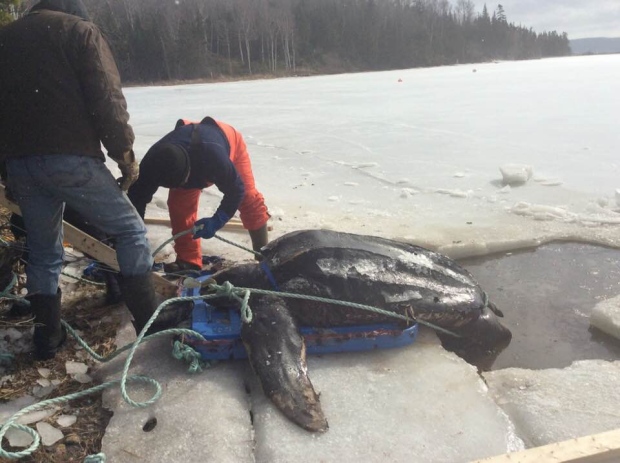
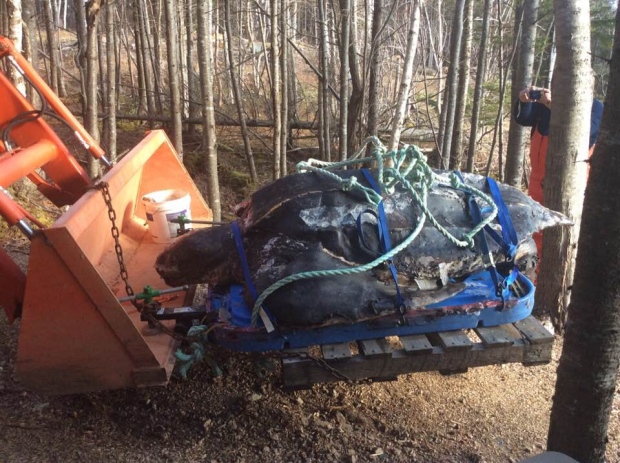
For those who don’t know much about Leatherback turtles; this cold-blooded creature is one of the world’s largest reptiles and can reach more than two meters in length weighing more than 900 kilograms. According to DFO (Department of Fisheries and Oceans), Leatherbacks are known to swim up to 12,000 kilometers a year and dive to depths of up to 1.2 kilometers.
As much as sea turtles have been spotted along Nova Scotia and Cape Breton’s shoreline during the summer, they typically move to warmer tropical waters in the winter time for nesting.
Why this big guy ended up so far north in the winter, is still a mystery but a few scientists have some very plausible hypothesis.
This was probably an animal that was probably feeding late into the year along the coastline in the open Atlantic side of Cape Breton […] It probably wandered into one of the inlets as it was feeding on jellyfish. I suspect, given where it was, it probably didn’t easily reorient to find its way back out into the open Atlantic.”
— Sea turtle biologist Mike James
Given the Leatherback endangered species status, finding one dead is always a blow to the population, but this death will not be in vain. Since its discovery, the animal carcass has been removed and transported to the Atlantic Veterinary College in Charlottetown PEI for a follow-up necropsy.
Here scientists will be able to collect as much information as possible on this species, and hopefully use some of this data to eventually help this turtle population rebound.

Preliminary tests suggest the leatherback sea turtle found frozen last week in Cape Breton likely died from starvation. Photo: The Canadian Press/HO, Fisheries and Oceans Canada
Writers Note: Sources CBC News, Global News, the Canadian Sea Turtle Network and DFO. Photo Credit: Sue MacLean and The Canadian Press/HO, Fisheries and Oceans Canada.
This post may contain affiliate links. We will make a small commission if you make a purchase through one of these links, at no extra cost to you. See full disclosure and disclaimer policy here.


A scientist has made a shocking new discovery in England. Under UV light the bills of Atlantic puffins light up like a glow stick.
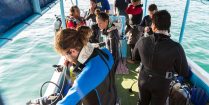
Green initiatives are important and in Zihuatanejo, we had the opportunity to join forces with Zihro Plastic and Dive Zihuatanejo to lending a helping fin.
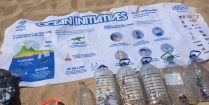
We all remember the viral Ice Bucket Challenge that went around social media to raise money for ALS? Well, like the Ice Bucket Challenge, the #binbagchallenge was an idea put together to raise awareness on environmental pollution and hopefully take steps towards a cleaner and better future.

There are many ways to fight back against pollution and on Bonaire, this takes the form of scuba diving cleanups.

Bonaire TEK is an annual October occurrence, where Buddy Dive Resort partners with leaders in the tech diving industry for a week of technical dive demonstrations, equipment trials, presentations, training ins and outs, and camaraderie.
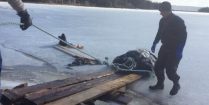
Nova Scotia has seen a few strange things over the years but never has a 360 kg leatherback turtle washed up dead and frozen in a Cape Breton lake.
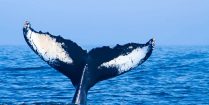
Find out how a couple of scuba divers made a gigantic snow sculpture to try and turn the tides on plastic use in the city of North Bay.
